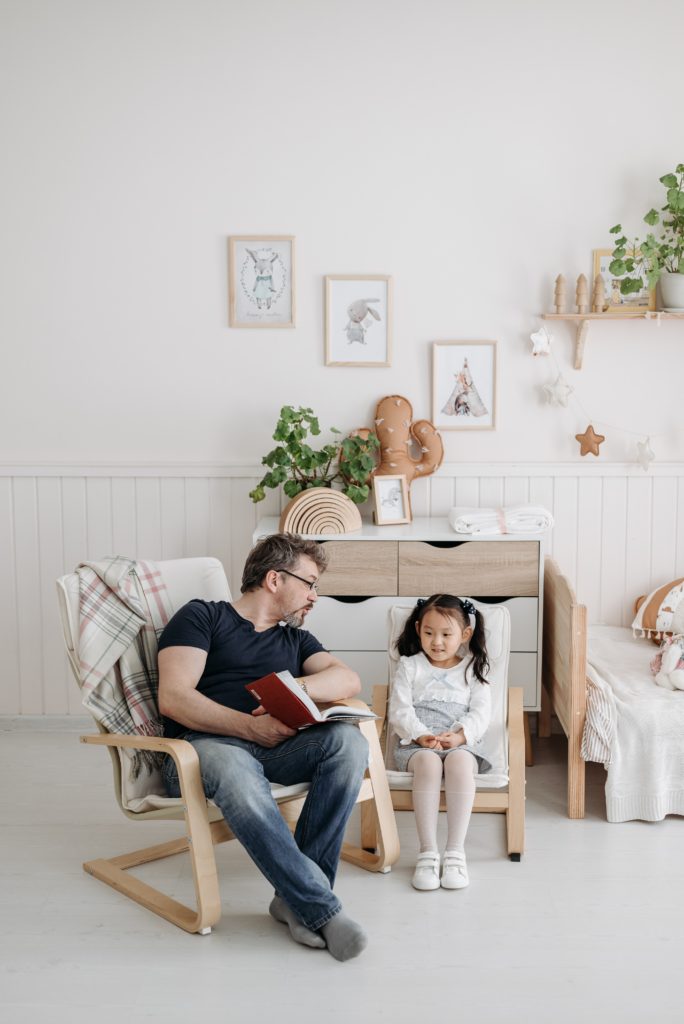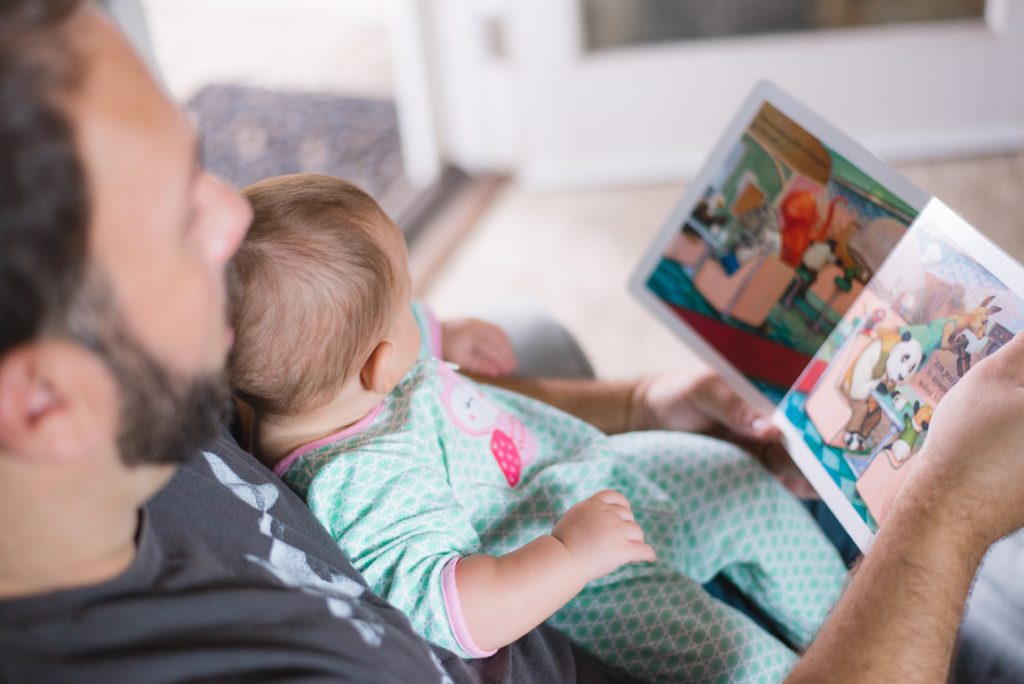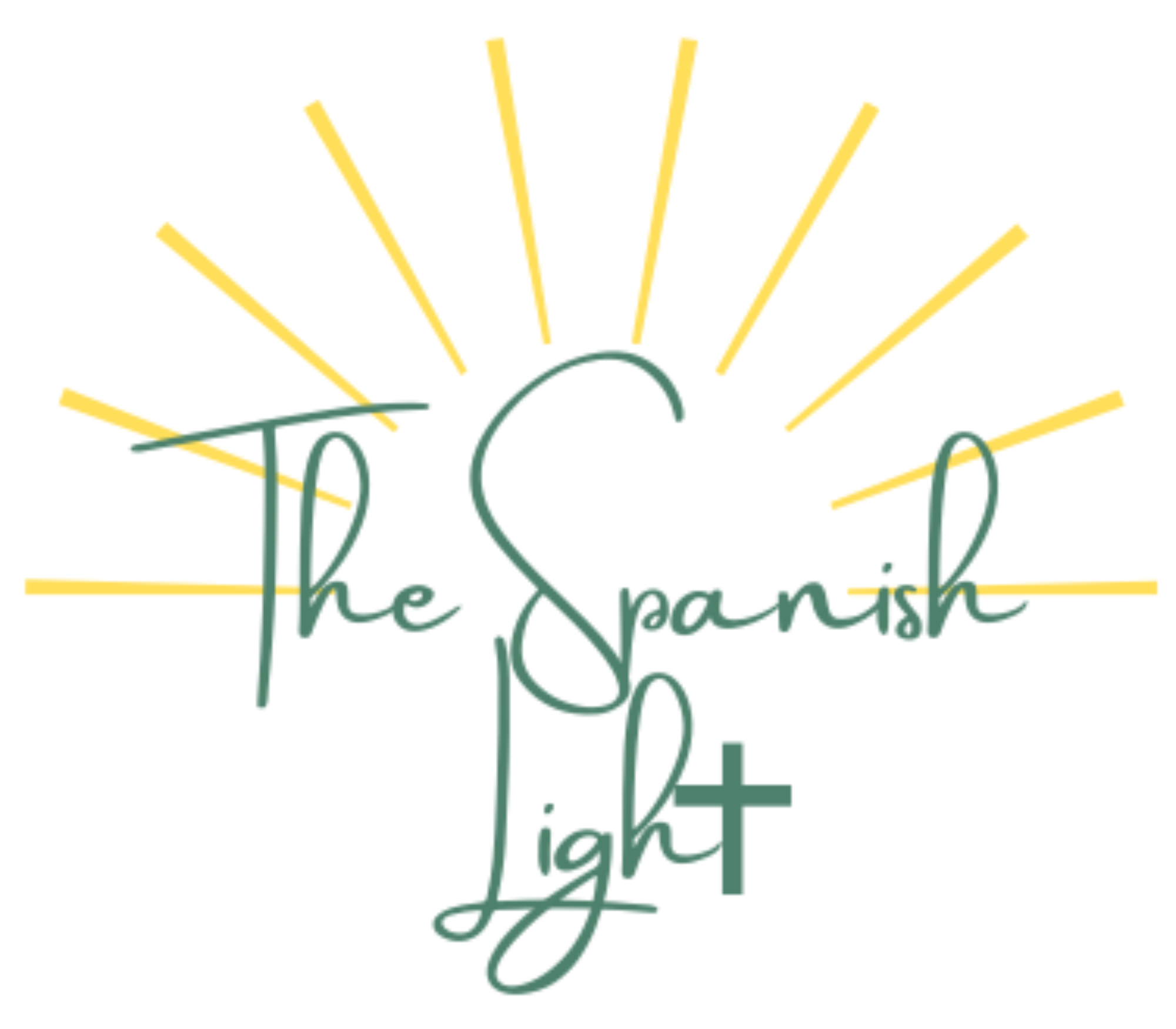
Raising a bilingual child successfully is not dependent on just one thing; it’s dependent on a whole range of ongoing efforts. However, the two foundational pieces of this journey can be summed up into:
- Talk a lot to our child in Spanish
- Read aloud a lot to your child in Spanish
Disclaimer: As an Amazon Associate, I get commissions for purchases made through links in this post at no extra cost to you. However, it is a financial blessing to my family when you do purchase directly through the links clicked on here and helps me keep bringing to you other wonderful free resources.
While talking to your child consistently in Spanish is important towards your success, this alone won’t help your child achieve higher language proficiency. Written text includes more sophisticated grammar and vocabulary than everyday speech does, and it is this text that will push your child’s language development to even greater heights. Therefore, reading aloud in Spanish daily to your child is critical. Doing so for at least 15 minutes from day one will allow your family to establish a rhythm and love for reading. As Adam Beck’s Maximize Your Child’s Bilingual Ability says:
“…but if you continue to read these books daily, over time the child’s brain will absorb the language it hears and comprehension, then communication, will be the eventual result”.
Reading aloud in Spanish to your children will equip them with a more robust vocabulary and spark a love for reading that will only empower them in the future.
I find many bilingual parents asking: How do I successfully read aloud to my child in Spanish? What language do I use when talking about the book with my child? As a bilingual parent myself, I’ve too asked these questions, researched answers, and experimented with all of the styles. Below I answer both of these questions.
Top Tips for Reading Aloud in Spanish:
First of all, before we hit those questions, it’s so important to know how to read aloud effectively. Regardless of what language you are reading in, these are my top tips for making a read aloud engaging and leaving your child wanting more.
*Utilize the pictures to build meaning
As you read the text, point to parts of the picture that corelate to it. Remember, while you have your eyes on the text, your young child is staring at the pictures. This helps give meaning to your words and make connections faster for your young child if you are pointing at the pictures. This should be done since infancy. What you say is just sound until it’s given meaning, and the best way to make this correlation is to point out the pictures while saying the words. Discuss what the pictures show. (More on how to discuss the pictures below.)
*Include meaningful actions
I’ve found that a great way to get my child, as well as my students, engaged in a read-aloud is to teach them actions to part of the stories. One instance where I’ve done this with my toddler is in reading one of her construction books. As the text says “the crane reaches high, high, high“, I read it with enthusiasm and stretch one arm up high and have my daughter do the same. Another instance I did this recently was while reading El pequeño pez blanco organiza una fiesta. We adore this book as my daughter is just about to celebrate her second birthday as well. In the book, each guest that will be attending the party is a different sea animal and an adjective is used to describe it. So while we read about la serpiente marina larga, I show my hands being stretched wide and long. After repeat reading the book enough times, my daughter can now do the motions herself. (See my video below.)
If doing a read aloud to older kids, and it’s not before bedtime, have the children act out the story or do their own actions that give meaning to the story. All the while, they are still engaged with the content and connecting meaning to the vocabulary. Best of all, they can be using the dialogue to practice speaking as well.
*Repeat and repeat
Repeat the words: For certain books, there are parts where you can have your child repeat the word or short phrase that you said. This gets them talking during the reading as well.
Repeat read: Read those books over and over again until you can read it with your eyes closed. Especially for the little ones, being able to “read” a story is them retelling it after having heard it so many times. This is a vital step in building literacy.
*Pause
After reading a book enough times, pause when you get to a well known part for your child to fill in the blank or to continue a phrase. You’ll be amazed how your child’s vocabulary will grow using this strategy.
*Use voices when reading aloud
When reading a story with dialogue, use different voices for the different characters. Make sure to use fluctuation with your voice. If it’s an exciting part, your voice should sound exciting. I kid you not, I used the pause strategy in a book recently, and my child continued the sentence using the same excitement in her voice that I always use. She’s learning to be a great reader just by listening to me reading aloud.
In the video below, I demonstrate how to use the pictures, actions, and pausing while reading El pequeño pez blanco organiza una fiesta. You’ll love how engaged my daughter is and how much Spanish we’re using!
Options for how to read aloud in Spanish
There is not only one right way to read aloud in Spanish. In fact, there are many ways to read aloud in Spanish depending on the book you have at hand.
*Read bilingual books
Bilingual books can range from word books to longer story books where the text is in both languages. So what’s the right way to read a bilingual book you may ask? I don’t think there’s a right way, but here are the options I find to be more comfortable and natural feeling.
- *Read through the entire book in one language (L1) and then read again in the second language (L2).
- *Read the entire book in L1 many times while the child gets familiar with the book. Later you can switch to reading the same book in the L2 so the child can make connections between the two languages.
- *If it’s a word book, like Primeras 100 Palabras book, feel free to read the word in both languages one right after the other or focus just on teaching the names of the objects in one language and add the other at a later time.
However, there is one way of reading a bilingual book that does not feel natural to me. With bilingual story books, I prefer not to read an entire section/sentence/phrase in one language and then repeat right after its translation. Doing this seems to interrupt the natural flow of reading a story and disengage the reader. Stick to the other ways mentioned above with bilingual books.
Read books in Spanish
Reading books aloud that are written in Spanish and are age appropriate will without a doubt increase your child’s language vocabulary. These books can be Spanish originals or books that were translated from another language into Spanish. As long as you have a quality translation, you’re working towards your goal.
Translate books into Spanish
For many, getting books in the Spanish language can be a challenge. So, depending on your own Spanish ability level, one option is to simultaneously translate a book that is say written in English into Spanish as you read aloud to your child. One warning though: children’s books that rhyme can be an extra challenge to translate.
TIP: As my child has quite a few English books that she’s drawn to on her shelf, I frequently am translating them as I read aloud. However, there have been many times where I stumble across a word I might not remember how to say in Spanish. This happened recently with the word fishing pole. I blanked while reading, so I just said it in English while pointing it out in the picture and went on. When I was done, I left the book open to that page until I had a free moment to look up the translation. I jotted down caña de pescar on a sticky note, stuck it on the page, and the next time we read the book I was able to stay in the Spanish language even more so. I kept the sticky note in the book until I had it memorized.
Narrate wordless picture books
There are many picture books out there that don’t have much or any text to go along with them. Engage your imagination and craft a story to go along with the illustrations in whatever language you choose. Give the characters names, describe what they are doing in the illustrations, create a back story that led to the character doing what its doing, and create a problem to the story to allow it to potentially be solved in the end. The details of your story can change with each retelling. Best of all, recruit your child to help you create the story. These books are especially great for multilingual families!
You Choose is not entirely wordless but it’s a fun book for older children that will keep you constantly talking as you choose how the story continues. Flashlight is a great wordless option for young children. Try searching for other books like these using the phrases: “wordless picture books” or “stories without words”.
What Language to Use When Interacting With the Book
One of the questions I’ve seen the most from other bilingual parents is: What language do I use when interacting with my child about the book we are reading?

Again, there is not a right or wrong way. For example, it’s not right or wrong to dialogue with your child in English about a book written in Spanish. You can dialogue about the book in either language.
In fact, when you dialogue about the book in an alternate language, you are helping make connections between the two languages.
My family follows the Minority Language at Home (MLAH) language model, so my child’s first language is Spanish. When I read to her in Spanish, I talk about the pictures and ask her questions in Spanish. Spanish is my goal, and I want us to interact using it as much as possible.
However, as I want her to be bilingual, I’m slowly adding in English into our reading. If I read to her in English, I then discuss the book with her in Spanish to build comprehension and make connections between the two languages. For example, she adores a book she has about a vegetable garden. When I read it in English, I point to the pictures and say what each vegetable is in both languages. As she gets older and her language ability develops more, I will switch to discussing English books in English with her so she is practicing responding in English.
What if my child isn’t responding in Spanish?
If your child isn’t answering you in Spanish, it is most likely due to a lack of vocabulary. Consider asking more close ended questions or yes/no questions and review the vocabulary with your child. Also, I don’t feel the use of “Spanglish” is a bad thing. It’s your child using what he/she knows in each language. Help your child learn the word he needs in order to say more of what he wants to in Spanish.
Overall though, the best way to maximize your child’s Spanish ability is to dialogue as much as possible in Spanish. Ask them questions in Spanish and have them answer in Spanish.
Questions to engage your reader
So what type of questions should you use to discuss the book you’re reading aloud to engage your reader? The most basic level conversation consists of having younger children name and describe items in an image. Consider the following:
- ¿Qué es esto? / What’s this?
- ¿Qué color es? / What color is it?
- ¿Es grande? / Is it big?
As the child matures and his language ability develops, offer more open-ended questions.
- ¿Qué ves? / What do you see?
- ¿Qué es chistoso/ interesante/ raro/ etc. sobre esto? / What’s funny/interesting/strange about this?
- ¿Qué están haciendo? / What are they doing?
- ¿Qué opinas de esta foto? ¿Por qué? / What do you think about this picture? Why?
- ¿Cómo te sintieras si fueras esa persona/animal/etc.? / How would you feel if you were this person/ animal/ etc.?
Keep on reading aloud. It will soon pay off and reveal fruit if you follow my tips above. Looking to read aloud the best baby bilingual/Spanish books? Check out my post 80+ of the Best Bilingual and Spanish Board Books for Babies.


Yay! Loved the video!! You can tell you guys have read that one a lot with her. I really need to do more of this with my 2(almost 3…!)-year-olds. I have started reading chapter books in Spanish aloud to my first grader (Chronicles of Narnia), and I keep going back and forth on what’s the best way to do it. Sometimes I read the whole chapter in English and then re-read the whole chapter in Spanish, or sometimes I just do a page or two at a time.
With chapter books, I think it could be good to create some sort of vocabulary list with your child. As you read, what are the words you need to discuss with him? I’d have him create a little notebook of them and use them later in a writing activity. I’ll keep brainstorming.
Awww hermoso video! Gracias por compartir❤️
Gracias Ale! <3